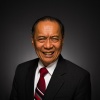The Philippines' Relationship with America
Recently, on the 4th of July the United States celebrated its 233rd Independence Day. The Philippines once shared the 4th of July with the United States as its own Independence Day—for almost 16 years.
As a citizen of the Philippines (the 12th most populous country on earth with 90 million people), I will briefly trace the now declining relationship that my country has had with the U.S. over the past century. I will start 110 years ago when the U.S., after winning the Spanish-American war, first acquired the Philippines.
Thoughts from President McKinley
James F. Rusling, an elderly supporter of U.S. President William McKinley, recalled in 1903 that about four years earlier in 1899 McKinley had spoken to a religious delegation, saying:
"The truth is I didn't want the Philippines, and when they came to us as a gift … I did not know what to do … I prayed to Almighty God for light and guidance … And it came to me this way: (1) That we could not give them back to Spain … (2) that we could not turn them over to France or Germany … (3) that we could not leave them to themselves … they would soon have anarchy and misrule … worse than Spain's was; and (4) that there was nothing left for us to do but to take them all, and to educate the Filipinos and uplift and civilize and Christianize them, and by God's grace do the very best we could by them, as our fellow men for whom Christ also died" (Lewis L Gould, The Presidency of William McKinley, pp. 140).
All that Rusling claimed that President McKinley had spoken was accomplished. Not only was Christianity introduced, but also the English language, general public education, the American culture—and a degree of prosperity.
Philippine Independence Day: 4th of July
In acknowledgement to the affinity between these two countries, the United States granted the Philippines its national independence on July 4, 1946.
However, almost 16 years later on May 9, 1962 the then President Diosdado Macapagal, moved by resentment over rejection by the U.S. House of Representatives of the $73 million additional war payment bill (later rectified), changed the Philippine Independence date to June 12, 1898 (a date still disputed by some).
The most controversial provision of the Bell Act imposed on the Philippine legislature two days before its independence was a "parity" clause that would have granted United States citizens equal economic rights with Filipinos. Violation of the parity privileges would have given the president of the United States the authority to revoke any aspect of the trade agreements.
Although Manuel A. Roxas—the newly installed president of the Philippines—was successful in getting rehabilitation funds from the U.S. after independence, he was forced to concede military bases, 23 of which were leased for 99 years. From the U.S. perspective, of course, it was to give free and continued protection to our fledgling nation against the advance of communism in the region.
Declining U.S. influence
Later President Carlos P. Garcia modified the Bohlen–Serrano Agreement to shorten the lease of the U.S. bases from 99 years to 25 years, and made it renewable every five years. He also mandated the Filipino First Policy, favoring Filipinos over foreigners.
During the term of Corazon Aquino (our first woman president), the two biggest military installations outside of the U.S. were closed on September 13, 1991 when the Philippine Senate rejected their right to stay. The closed bases were:
Clark Air Base in Angeles City was operated by the U.S. Air Force from 1903 to 1991. It was not only the largest U.S. overseas base, but also the most advanced military facility in history. It became the Diosdado Macapagal International Airport and the Clark Freeport Zone.
U.S. Naval Base Subic Bay was the largest U.S. Navy installation in the Pacific, a major supply and ship-repair base and a rest and recreation facility for the U.S. Navy.
Changes in the wind
As the U.S. and the Philippines drift further apart each nation is losing many of its defense advantages. The rising influence of powerful non-democratic nations in Asia is cause for concern for those of us inhabiting the many isles of the Philippines.
